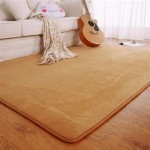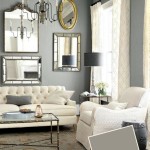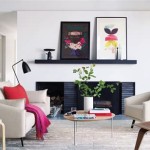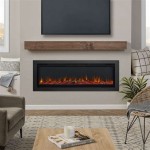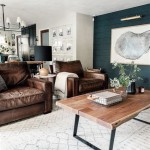Organizing Furniture in Small Living Rooms: Maximizing Space and Style
Organizing furniture in a small living room presents a unique set of challenges and opportunities. Effective space management is crucial not only for functionality but also for creating an aesthetically pleasing and comfortable environment. Strategic planning, mindful furniture selection, and clever arrangement techniques are essential to maximizing the available space without compromising style or comfort. The goal is to create a living room that feels open, inviting, and serves its intended purpose without feeling cramped or cluttered.
The success of organizing a small living room hinges on a comprehensive understanding of the room's dimensions, traffic flow, and intended use. Before moving any furniture, a detailed assessment of the space is necessary. Measurements of the room's length, width, and height, including window and door placements, are vital. Understanding how the room will primarily be used – whether for relaxation, entertainment, socializing, or a combination thereof – will significantly influence furniture choices and placement.
Choosing furniture that is proportionally appropriate for the space is paramount. Oversized furniture can quickly overwhelm a small room, making it feel even smaller. Conversely, furniture that is too small can appear lost and insignificant. Selecting pieces that are scaled to the room's dimensions and designed with space-saving features in mind is a crucial first step in effective organization.
Prioritizing Functionality and Multi-Purpose Furniture
In a small living room, every piece of furniture should serve a purpose, and ideally, multiple purposes. Prioritizing functionality ensures that the limited space is used efficiently. Multi-purpose furniture is a game-changer, offering space-saving solutions without sacrificing comfort or style.
Sleeper sofas are quintessential examples of multi-purpose furniture. During the day, they function as comfortable seating for lounging and entertaining. At night, they can be converted into a bed for guests, making them invaluable for individuals who frequently host overnight visitors but lack a dedicated guest room. The key is to choose a sleeper sofa that is comfortable both as a sofa and a bed and that seamlessly integrates into the room's overall aesthetic.
Ottomans with storage are another excellent option for maximizing space. These versatile pieces can serve as footrests, coffee tables, or extra seating while simultaneously providing hidden storage for blankets, pillows, books, or other items that might otherwise clutter the room. Choosing an ottoman with a lift-top or hinged lid allows for easy access to the stored items.
Coffee tables with built-in drawers or shelves provide additional storage space while serving their primary function. These tables can be used to store remote controls, magazines, or other small items that tend to accumulate on surfaces. Selecting a coffee table with a minimalist design and clean lines will help to maintain a sense of openness and avoid visual clutter.
Wall-mounted shelves and cabinets offer vertical storage solutions that can free up valuable floor space. These units can be used to display books, decorative items, or electronics while keeping them off the floor. Floating shelves, in particular, create a visually light and airy feel, making the room appear larger. When installing wall-mounted storage, it's important to ensure that it is securely mounted and that the weight capacity is appropriate for the intended contents.
Folding or nesting tables are ideal for individuals who occasionally need extra surface space but don't want to permanently sacrifice floor space. These tables can be easily stored away when not in use, allowing for maximum flexibility in the living room layout. They are particularly useful for entertaining, providing additional surfaces for food, drinks, or games.
Optimizing Layout and Traffic Flow
The layout of furniture in a small living room can significantly impact its perceived size and functionality. Optimizing the layout and traffic flow is essential for creating a comfortable and inviting space. Strategic placement of furniture can create a sense of openness and make the room feel larger than it actually is.
Placing the largest furniture pieces against the walls is a common strategy for maximizing floor space. This creates a visual anchor in the room and allows for more open space in the center. However, avoid pushing all furniture against the walls, as this can make the room feel boxy and uninviting. Leaving a small gap between the furniture and the walls can create a sense of depth and prevent the room from feeling cramped.
Creating distinct zones within the living room can help to define different areas and enhance functionality. For example, a seating area can be created around a sofa, coffee table, and chairs, while a separate reading nook can be established with a comfortable armchair, side table, and lamp. Defining zones helps to organize the space and make it feel more purposeful.
Traffic flow is a critical consideration in furniture placement. Ensure that there are clear pathways throughout the room to avoid obstacles and create a sense of fluidity. Avoid placing furniture in front of doorways or windows, as this can block natural light and impede movement. Consider the location of electrical outlets when planning furniture placement to avoid unsightly cords and ensure easy access to power.
Using area rugs can define different areas within a small living room and add visual interest. A rug placed under the seating area can anchor the furniture and create a cohesive look. Choose a rug that is appropriately sized for the space and that complements the room's color scheme. Avoid using a rug that is too small, as this can make the room feel disjointed.
Mirrors are a powerful tool for creating the illusion of space in a small living room. Strategically placed mirrors can reflect light and make the room feel larger and brighter. A large mirror placed on a wall can create the illusion of an additional window, while smaller mirrors can be used to highlight decorative objects.
Color Palette, Lighting, and Decluttering
The color palette, lighting, and decluttering efforts play a crucial role in the overall ambiance and perceived space of a small living room. A cohesive color scheme, strategic lighting, and a clutter-free environment can significantly enhance the room's appeal and functionality.
Light and neutral colors tend to make rooms feel larger and more open. Opting for a color palette that incorporates light shades of white, beige, gray, or pastel hues can create a more airy and spacious atmosphere. These colors reflect light, making the room feel brighter and more inviting. Accent colors can be introduced through accessories, such as pillows, throws, or artwork, to add visual interest without overwhelming the space.
Natural light is invaluable in a small living room. Maximize natural light by keeping windows clean and unobstructed. Avoid using heavy curtains or blinds that block sunlight. Instead, opt for sheer curtains or blinds that allow light to filter through while providing privacy. Consider adding a skylight or enlarging existing windows to increase the amount of natural light in the room.
Artificial lighting is equally important in a small living room, especially during the evening hours. Layering different types of lighting can create a warm and inviting atmosphere. Ambient lighting, such as overhead fixtures or lamps, provides general illumination for the room. Task lighting, such as reading lamps, provides focused light for specific activities. Accent lighting, such as spotlights or sconces, highlights decorative objects and adds visual interest. Using dimmers allows for adjusting the lighting levels to create different moods.
Decluttering is essential for maintaining a sense of order and spaciousness in a small living room. Regularly removing unnecessary items can prevent the room from feeling cramped and cluttered. Sort through belongings and donate, sell, or discard items that are no longer needed or used. Store items that are used infrequently in storage containers or other designated areas.
Vertical storage solutions, such as shelves or cabinets, can help to keep clutter off the floor and surfaces. Utilize wall space to maximize storage capacity. Consider using decorative baskets or bins to organize items on shelves and keep them out of sight. Labeling storage containers can make it easier to find items when needed.
Maintaining a minimalist approach to décor can help to prevent the room from feeling cluttered. Choose a few key decorative items that reflect personal style and avoid overcrowding surfaces with too many accessories. Simple and clean lines can create a more streamlined and spacious look. Regularly dusting and cleaning surfaces can further enhance the overall appearance of the living room.
By carefully considering these aspects and implementing strategic organization techniques, it is possible to create a small living room that is both functional and aesthetically pleasing. The key is to prioritize space management, choose furniture wisely, optimize the layout, and maintain a clutter-free environment.

How To Arrange Furniture In A Small Living Room Setting For Four Interiors

How To Efficiently Arrange The Furniture In A Small Living Room

How To Arrange Furniture In A Small Living Room The House

How To Efficiently Arrange The Furniture In A Small Living Room

How To Efficiently Arrange The Furniture In A Small Living Room

Ideas For Small Living Rooms

6 Designer Tips For Arranging Furniture In Narrow Living Rooms Pottery Barn

10 Living Room Interior Design Mistakes How To Fix Them Youtube

How To Decorate A Long Or Narrow Living Room Solutions For Tricky Spaces

7 Tips For Arranging A Small Living Room Layout Eluxury

